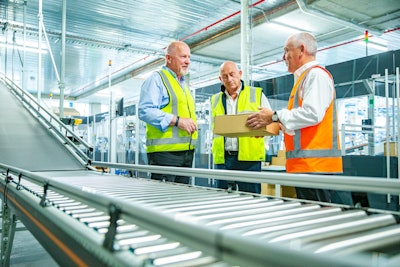
The march towards automation and artificial intelligence on the shop floor and in warehouses has exploded in recent years. Driven by cost savings, quality improvements and the need for enhanced productivity, manufacturers and distributors have rapidly adopted new technologies including collaborative robots, self-driving vehicles and automated inventory and quality control systems.
As the COVID dust settled, the focus for many businesses was on automating repetitive, dangerous, and low-skill tasks. As automation and robotics continues to advance, however, even skilled jobs in maintenance, engineering and technician roles are being augmented by predictive analytics, computer vision, and other AI capabilities. This is allowing business to provide opportunities for employees to engage in more higher-level, value-adding, strategic responsibilities.
The automation revolution doesn’t come without its challenges. Automation adoption risks inadvertently marginalizing portions of the workforce, negatively impacting engagement and retention of employees who feel unsupported through reskilling and work rearrangement. With an ageing workplace and nation-wide labor shortages, a failure to harness automation to benefit employees could spell disaster for business growth.
In 2024, the onus will be on business owners to retain their best people. By embracing automation to improve the safety and wellbeing of employees, the perception of warehouse shifts can begin to change. Walking around a workshop floor for eight hours tossing around cartons and driving forklifts takes a physical and mental toll on employees, but intelligent systems and AI can make workers feel more productive and less physically exhausted.
Protecting the Longevity of Loyal Employees by Keeping Them Safe
Rather than viewing automation as a way to reduce headcounts, technology investment can retain staff who understand and add real value to your business, and employee safety crucial to this mission. The proliferation of smart systems and data-driven insights helps businesses evolve from reactive to preventative safety approaches, continuously improving risk prevention and mitigation.
Internet of Things-enabled automated safety evaluations lessen dependence on human oversight, while predictive analytics models harness data to foresee potential hazards ahead of time. Computer vision delivers real-time visual monitoring to rapidly detect anomalies, flexible collaborative robots adapt to straining environments to reduce the burden on workforces, and immersive simulations provide highly compelling and effective safety training. Such industrial AI applications drive a transformation in safety strategies and protocols - rather than merely responding to incidents, the right technologies allow pre-emptive action. Data facilitates continuous upgrades to safety standards over time, while intelligent infrastructure and workflows maintain these high standards.
Integrating Disparate Technologies
As the market expands with more advanced automation products and software tools, integrating systems will become easier. In 2024, it’s likely we will see more companies enter the systems integrator role as plug-and-play solutions lower barriers to connect various technologies.
However, integrators must balance business opportunities with considerations around capabilities. Customers relying on integrators to implement sophisticated warehousing tech need partners focused on long-term, holistic results rather than quick wins.
Rather than rushing to adopt automation for productivity gains alone, supply chain leaders see 2024 as an opportunity to tailor automation, AI and other emerging innovations to complement staff skills. Investing in both technology and people opens a path toward productivity, safety, satisfaction and stability across an overstretched and ageing workforce.















![Pros To Know 2026 [color]](https://img.sdcexec.com/mindful/acbm/workspaces/default/uploads/2025/08/prostoknow-2026-color.mduFvhpgMk.png?ar=16%3A9&auto=format%2Ccompress&bg=fff&fill-color=fff&fit=fill&h=135&q=70&w=240)



